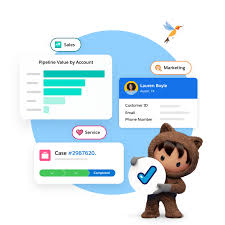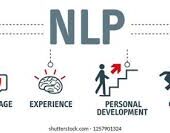Design Tips to ‘No-Silo Mentality’ Your Teams
Working in silos is a detrimental organizational condition where a team, or group of teams, isolates itself from the rest of the organization. This can happen intentionally, due to organizational structures, or simply as an unintended consequence over time. Design to No-silo Teams can eliminate silos. Silos often result in withheld information, poor collaboration, and work that is misaligned with company goals.
What is a No Silo Mentality?
A no silo mentality is the practice of actively resisting the natural tendency to create divisions within a company. This approach aims to prevent the formation of an “us versus them” mindset among different teams or levels of leadership, fostering a more unified and collaborative corporate culture.
Here are design tips to no-silo your teams.
- Identify Knowledge Gaps: Start with a discovery phase to understand the challenges and goals your teams face. Pinpoint knowledge gaps that hinder collaboration and affect customer satisfaction. Look for gaps within one team that could be filled by another, but have not been shared.
- Partner with Team Leaders: Secure buy-in from senior leaders who can champion and promote collaboration. Encourage these leaders to model collaborative behaviors and actively engage in initiatives aimed at breaking down silos.
- Launch Communication Channels: Establish clear communication channels, such as dedicated Slack channels, Google Chat rooms, or regular meetings, to facilitate team interaction. Create opportunities for teams to connect, share ideas, and celebrate successes.
- Generate Collective Wisdom: Organize workshops and brainstorming sessions where team members can freely share ideas and feedback. Foster a safe and inclusive environment for collaboration, allowing diverse perspectives to enhance the team’s collective wisdom. Think about unified knowledge bases for all teams. Whatever happened to lunch and learns? Let one team present to other teams what is going on in their no-silo environment. Remember there are no stupid questions!
- Promote Curiosity: Encourage curiosity and interest in cross-team collaboration by addressing pressing questions and pain points identified by team members. Encourage people to ask ‘why’. Share success stories and highlight the value of collaborative design reviews to keep teams engaged.
- Experiment, Measure, and Iterate: Continuously try different collaboration approaches and assess their impact. Measure performance and refine strategies based on what works best for fostering collaboration and breaking down silos.
- Reinforce Best Practices: Provide ongoing support and guidance to help teams embrace cross-team collaboration. Model collaborative behavior and maintain a predictable communication schedule to sustain team engagement and momentum.
And here are 7 steps to create better collaboration, while you are at it.
7 Strategies to Break Down Team Silos and Enhance Team Effectiveness
Highly collaborative and connected teams are more agile and better equipped to meet user needs. In fact, 72% of leaders believe merging teams and responsibilities can improve overall operational efficiency. Here are seven strategies to break down team silos and improve team effectiveness:
- Create a Culture of Cross-Functional Collaboration
- Leverage Cross-Functional Teams: According to Deloitte, 83% of digitally maturing companies utilize cross-functional teams to enhance agility. Encourage employees from different departments to collaborate on specific projects, sharing expertise and working towards common objectives.
- Offer Cross-Functional Training: Provide training opportunities that expose employees to different aspects of the business. Consider shadowing or peer-to-peer mentoring, like allowing a UX designer to experience a day in the life of an engineer.
- Integrate Performance Metrics: Develop metrics that emphasize both individual and team contributions, ensuring evaluations are based on collaborative efforts.
- Foster Continuous Learning and Knowledge Sharing: Encourage sharing of knowledge and experiences from cross-functional projects. Highlight these contributions in channels like Slack or newsletters.
- Use the Right Collaboration and Communication Tools for your company and industry
- Implement Comprehensive Tools: Utilize project management software, asynchronous communication tools, and document collaboration tools to break down communication barriers.
- Centralize Information: Platforms like Switchboard can act as a single source of truth, organizing all project-related tools and files in one place. This reduces context switching and helps teams stay aligned and informed.
- Foster Open, Transparent Communication
- Lead by Example: Leaders should model open communication by sharing information, admitting mistakes, and encouraging feedback. This builds a culture of transparency.
- Establish a Shared Vision and Values: Promote accountability, trust, and empathy to support open communication.
- Encourage an Open-Door Policy: Ensure employees feel comfortable approaching leaders and fellow-team members with concerns, ideas, blockers, or feedback.
- Codify Communication Practices
- Establish Guidelines: Set clear expectations for tone, frequency, and channels of communication. Define the use of tools like Switchboard or Jira for collaboration and Slack for quick updates.
- Include Asynchronous Communication: Provide examples and guidelines for asynchronous communication, such as updating Slack status during focus work to indicate availability.
- Clarify Roles and Responsibilities
- Provide Visibility: Gather team members to discuss and document roles, responsibilities, and potential overlaps.
- Create a Roles and Responsibilities Matrix: Develop a visual representation of roles across teams to highlight connections and dependencies. Use tools like Switchboard, Miro, or Asana for easy reference.
- Define Decision-Making Protocols: Specify who has decision-making authority and establish collective decision-making processes when necessary.
- Solicit Feedback Regularly: Continuously check in with team members to identify challenges and adjust roles as needed.
- Set Common Goals
- Align Goals with Business Priorities: Set goals that require collaboration between teams, tying them to key business priorities like product launches and updates or customer satisfaction.
- Establish SMART Goals: Ensure goals are Specific, Measurable, Achievable, Relevant, and Time-bound to provide clarity and purpose.
- Define Interdependencies: Clearly outline how team goals are interconnected, emphasizing the necessity for collaboration.
- Connect to Company Objectives: Link departmental goals to overall company objectives using frameworks like OKRs to track progress. Ensure employees understand how their initiatives relate to goals and objectives.
- Use Team Building Activities
- Encourage Spontaneous Interactions: Facilitate one-to-one meetings or broader team activities to foster connections across different teams. For remote teams this does require some additional effort.
- Organize Team Building Events: Host activities such as trivia games, puzzle nights, virtual escape rooms, role-playing games, and icebreaker questions to promote teamwork and break down silos.
By implementing these strategies, you can break down silos, enhance team collaboration, and improve overall effectiveness, leading to greater agility and better alignment with user needs. Working in silos is the opposite of collaboration; silos prevent individuals from being part of a team with a unified vision, while different teams work amongst themselves, not knowing what’s happening with other departments or initiatives in the business.
By implementing these no-siloed Design tips, you can effectively ‘no-silo’ your product and other teams, fostering a culture of collaboration that enhances customer satisfaction and drives success.
Content updated April 2024.













